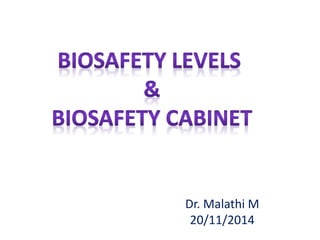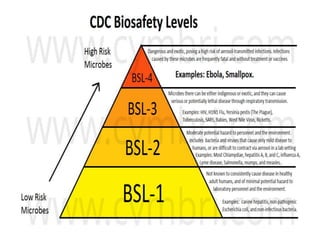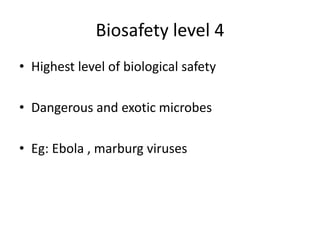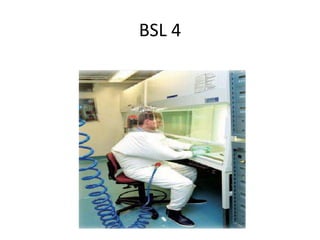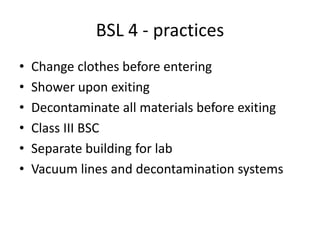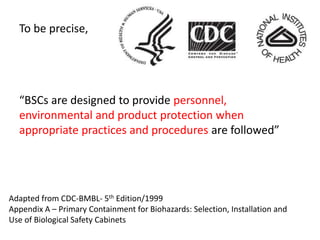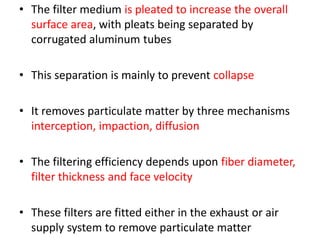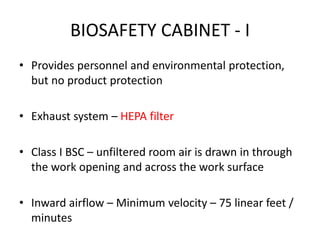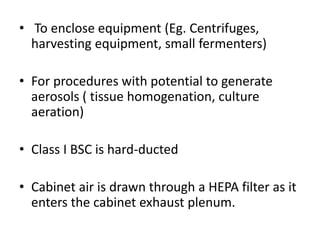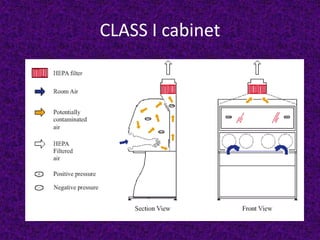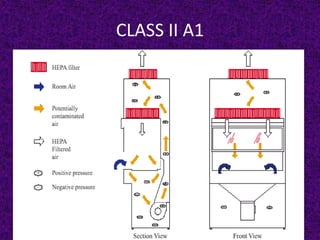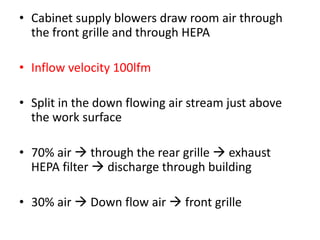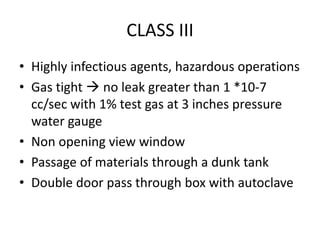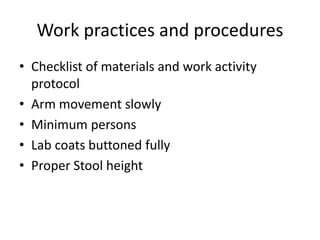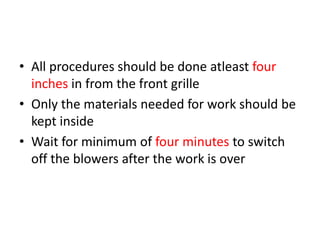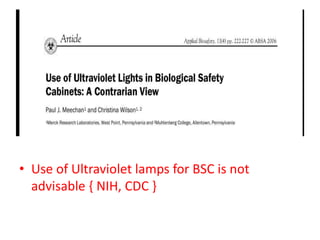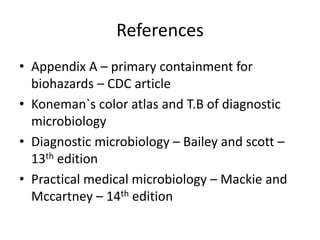This document discusses biosafety and biosafety cabinets. It defines biosafety as safety precautions that reduce risk of exposure to infectious materials. There are 4 biosafety levels depending on the risk of the microbe, with level 4 being the highest risk. Biosafety cabinets provide protection to personnel, environment, and products being handled. There are 3 classes of biosafety cabinets - Class I provides personnel and environmental protection; Class II provides personnel, environmental, and product protection; Class III provides highest level of containment for dangerous pathogens. The document outlines practices for different biosafety levels and cabinet classes.
